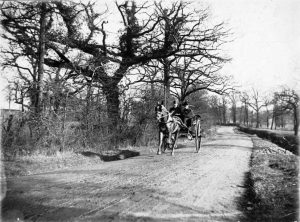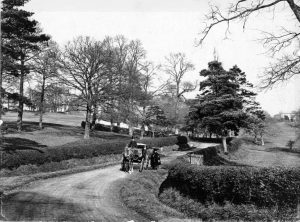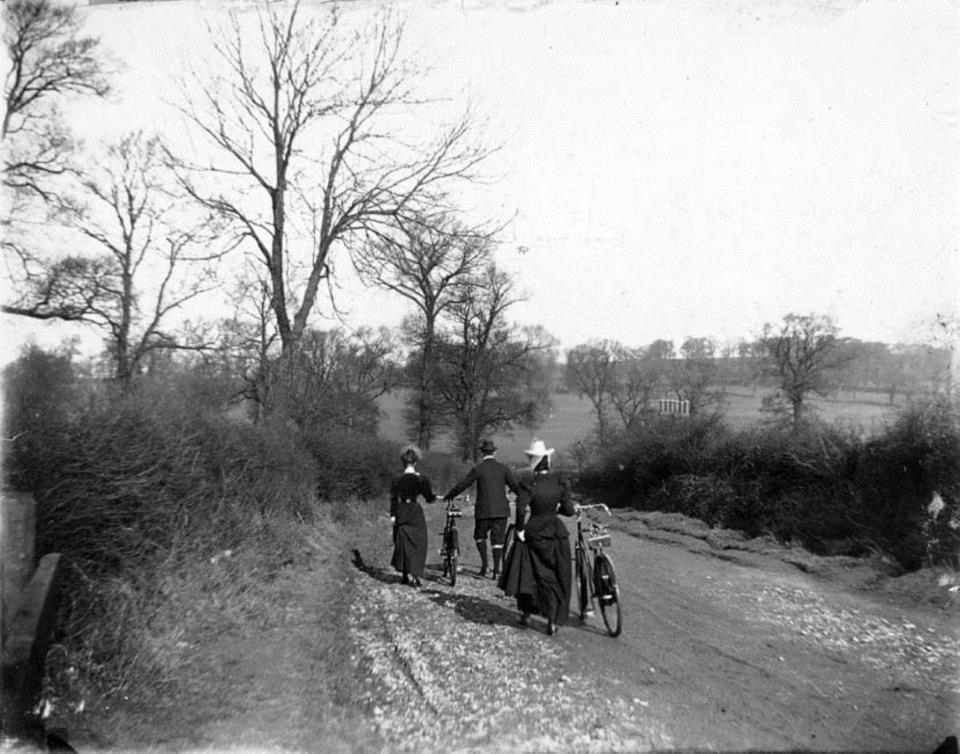On looking at the 1900 map of the area around Dollis Hill station, one might notice an immediate problem – Dollis Hill itself isn’t there at all. The nearby area, in those days, was called Dudden Hill.
The Dollis Hill Estate was formed in the early 19th century, when the Finch family bought up a number of farms in the area to form a single estate, and it is somewhat to the north of the later location of the station. Dollis Hill House was built in the 1820s.
William Ewart Gladstone, the UK Prime Minister, was a frequent visitor to Dollis Hill House in the late 19th century. The year after his death, 1899, Willesden Council acquired much of the Dollis Hill Estate for use as a public park, which was named Gladstone Park.
Mark Twain stayed in Dollis Hill House in the summer of 1900. He wrote that ’Dollis Hill comes nearer to being a paradise than any other home I ever occupied’.
The code-breaking Colossus computer, used at Bletchley Park during the Second World War, was built at the Post Office Research Station in Dollis Hill by a team lead by Tommy Flowers. The station was relocated to Martlesham Heath at the end of the 1970s.
A World War II bunker for Winston Churchill called Paddock is located here.
The fictional Dollis Hill Football Club features occasionally in the British satirical magazine Private Eye, and Dollis Hill tube station, although real, is frequently played in the radio panel game Mornington Crescent.
 Until the end of the nineteenth century, Dollis Hill was still a very rural backwater. The tube station was yet to be built (completed in 1907) and Dollis Hill Lane was the main thoroughfare through the area which was only later to be built up.
Until the end of the nineteenth century, Dollis Hill was still a very rural backwater. The tube station was yet to be built (completed in 1907) and Dollis Hill Lane was the main thoroughfare through the area which was only later to be built up.
Dollis Hill Lane connected (and still does) the Edgware Road and Neasden. Dollis Hill Lane is not immediately locatable on the “slippy map” from 1900 at the top of the page since the red marker shows the future site of the tube station. Dollis Hill Lane is quite a way north.
About halfway along its length, Dollis Hill House had been built, opposite its farm, in 1825.
Author Mark Twain, stayed at Dollis Hill House, built along the lane, in the summer of 1900. Twain wrote that he had “never seen any place that was so satisfactorily situated, with its noble trees and stretch of country, and everything that went to make life delightful, and all within a biscuit’s throw of the metropolis of the world.” “There is no suggestion of city here; it is country, pure and simple, and as still and reposeful as is the bottom of the sea.” He later wrote “Dollis Hill comes nearer to being a paradise than any other home I ever occupied”.
That same year, a photographer was at large along the lane. It is unclear who was photographed here in the year 1900, but the man and a woman in a two-wheeled carriage, may have been coming to or from the house.
 There is the possibility that this set of photographs shows an outing from the house, since here we see a different couple of people; the man is in a top hat and the woman shading herself from the winter sun using an umbrella.
There is the possibility that this set of photographs shows an outing from the house, since here we see a different couple of people; the man is in a top hat and the woman shading herself from the winter sun using an umbrella.
In the final image of the 1900 series, pictured below, a group of people are pushing their bicycles along Dollis Hill Lane.

